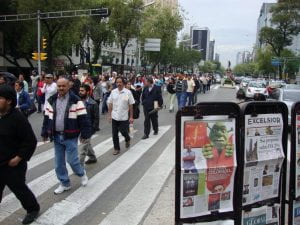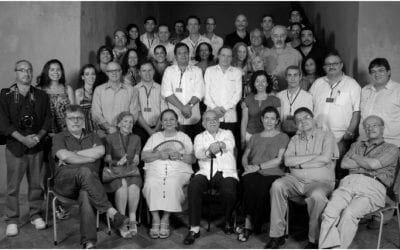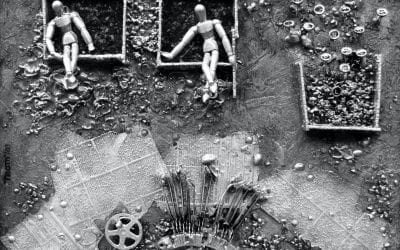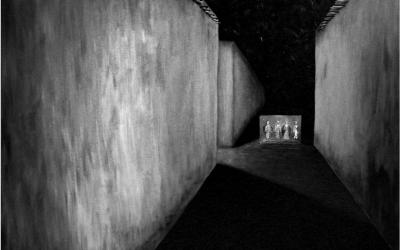Journalism Training
From Lapdogs to Watchdogs
When I was a young Brazilian journalist in Rio de Janeiro in the early 1970s, I answered the phone in the newsroom several times to hear an ominous voice announcing that he was a federal police agent calling to read out a notice. It was a censorship notification that invariably would start with the words: “By superior order, it is prohibited the publication of…” During the 1970s, military dictatorships that muzzled the press ruled in almost all Latin American countries. As journalists, we would try to test the limits of those regimes as much as possible. But by and large we had no ways to disobey censorship. Censorship was the main problem for us, and went along with permanent and very real threats of becoming a political prisoner, which happened to many colleagues.
In the last quarter of the 20th century, however, an unprecedented wave of democracy swept across the hemisphere. As the new century arrived, elected governments became the rule rather than the exception in Latin America. Journalists enjoyed levels of freedom of expression that had only been seen in their countries during rare and brief intervals between dictatorships or coups d’état. Suddenly, journalists who had fought for democracy were dealing with elected governments instead of the old dictatorships or authoritarian regimes. The challenges of dealing with elected governments were different, more sophisticated and complex in many aspects, despite the new levels of freedom. Throughout the years, since that wave of democratization, many reporters and editors felt that they were not well prepared for their new role as watchdogs in a more open, democratic environment. They needed training to improve skills to be more effective at their jobs. Later, the huge impact of the Digital Revolution on the media and on society at large made this necessity for training even greater.
By the turn of the century, I had already spent a few years as a journalism professor at the University of Texas at Austin and had discovered this great appetite for training during frequent trips to Latin America to teach seminars and workshops. My own experience as a Brazilian journalist, as well as those trips to other countries, inspired me to dream of the creation of a special program to offer training to journalists in Latin America and the Caribbean. My dream, however, went beyond the traditional hit-and-run workshops of a couple of days that are typical of media assistance programs for developing countries. Instead, I wanted to combine training with help for journalists to create their own, local, independent and self-sustainable organizations with their own permanent professional development programs.
I was lucky to find a way to make that dream come true. Thanks to a generous grant from the John S. and James L. Knight Foundation, we launched the Knight Center for Journalism in the Americas at the University of Texas at Austin in June 2002. Since then, the Knight Center has reached thousands of journalists in all Latin American countries and virtually all islands in the Caribbean, with on-the-ground and online professional training workshops, seminars and courses. In early 2011, our distance learning program, which offers four- to six-week courses, passed the milestone of 5,000 journalists trained entirely online or in programs that combined online and in-person workshops.
In addition to providing training, we have successfully helped journalists to create organizations that are different from labor unions or traditional associations and much more effective in focusing on permanent training and professional development of reporters and editors. Some of our partner organizations were created from scratch, with some help from us, but thanks mainly to the effort of the local journalists themselves, usually some of the most active and dedicated reporters and editors in their countries.
In 2002, in the wake of the assassination of investigative reporter Tim Lopes in Rio de Janeiro, we helped create the Brazilian Association of Investigative Journalism (Associação Brasileira de Jornalismo Investigativo, or ABRAJI). Modeled after the Investigative Reporters and Editors (IRE) of the United States, ABRAJI soon became one of the most important organizations of journalists in Brazil. Its annual congress paralleled the IRE’s in the number of participants and variety of sessions and topics, and ABRAJI became a model for other organizations in the continent.
The Knight Center also helped to create the Center for Journalism and Public Ethics (CEPET) in Mexico, the Argentine Journalism Forum (FOPEA), the Peruvian Network of Provincial Journalists, the Paraguayan Journalists’ Forum (FOPEP), GuateDigital (a network of radio journalists in Guatemala) and the Newsroom Council (Consejo de Redacción, CdR) in Colombia. In Chile, Ecuador and the Dominican Republic, as well as a few other countries, there are ongoing efforts to establish networks or organizations of journalists.
The number one request for training throughout Latin America has been in investigative journalism. Reporters and editors want to learn how to uncover stories that governments and corporations want to hide. They know that those powers work in increasingly sophisticated ways, with the help of public relations experts, to control the flow of information. Sometimes, it is clearly an unfair game, with journalists who have received very little, if any, training on one side, and the powerful sources helped by professional marketers on the other side.
The very concept of investigative journalism seems to encapsulate the goals of Latin American journalists to move forward in the ongoing democratization processes in their countries. How to move from lapdog journalism to watchdog journalism? In Latin American countries with incipient democracies and little tradition of a free press, this is the essential question for journalists who want to aggressively pursue their role in the checks and balances of a democratic society.
It is amazing what just a little bit of training can do. In 2003, for example, we hosted the first “training of trainers” workshop on Computer-Assisted Reporting (CAR) in São Paulo, with 22 journalists coming from 17 states in Brazil. All of them had promised to return to their newsrooms and teach what they had just learned from two of the best trainers of the American IRE, Brant Houston (now a professor at the University of Illinois) and Ron Nixon (now a New York Times investigative reporter). Thus, when Marcelo Moreira and Gabriela Mafort, from Globo TV in Rio de Janeiro, went back to their newsroom, they started having meetings with their colleagues explaining how to use CAR techniques. That same week, the government of Rio de Janeiro issued its usual press release saying that violence was on the decline in Rio, highlighting some figures that supposedly proved their findings. The Globo team decided to request the raw data and apply the CAR techniques they had just learned, of cross-checking the figures. Their effort yielded the opposite conclusion: in fact, violence was on the rise. All the other newsrooms in Rio were shocked and had to change their stories when Globo’s evening news came out.
More and more journalists in Latin America now know that interviewing the data before interviewing people makes their investigations stronger. Simple skills like knowing how to import a spreadsheet from the Web and cross-check data have become extremely powerful tools in the region, especially after administrations started to follow the fashionable tendency of e-government, publishing a lot of raw data on the Internet. The data does not mean a lot for an untrained journalist, but it can be revealing and relevant to a journalist who is well-trained and versed in CAR basic techniques.
Besides investigative journalism, Latin American journalists also are eager for training in the use of the Internet and other digital technologies. This is obviously a universal demand, but it is important to note that Latin America has a fast growing Internet market, with one of the highest levels of activity in social media, for example. Latin Americans in general, and Brazilians in particular, seem to be more active in social networks than Americans or Europeans. Journalists are trying their best to understand this phenomenon and adapt to the new media ecosystem that is rapidly emerging.
The Knight Center has broken its own records for applications received from Latin American journalists every time it offers courses such as “How to Write for the Web,” “Digital Media Project Development,” “Digital Tools for Investigative Journalism,” and “Hyperlocal Journalism on the Web.” These courses are not only about the Web, but they are also taught entirely on the Web, on a distance-learning platform that the center has developed using an open-source course management system called Moodle. The online courses proved to be ideal to teach journalists in Latin America, since they offer flexibility in terms of time. Students can log on to courses at any time, easily adapting the pace of their studies to their busy work schedule. We have enrolled more than 5,000 journalists from all over the hemisphere in almost 100 courses taught in English, Portuguese and Spanish by fellow journalists and scholars from a variety of countries.
An interesting chemistry arises when journalists from different countries in Latin America are united by their interest in training. The bond of community formation can last and generate positive results and interesting collaborative projects. For example, the Consejo de Redacción (CdR), one of the youngest but most dynamic and creative journalists’ organizations in Latin America, used the Knight Center’s distance learning platform to engage 89 journalists from 11 Latin American countries in an online training program that converged into a collective investigation of carbon emissions trading in the countries of the region.
The CdR-led initiative, which involves several similar organizations of journalists from all over the hemisphere, symbolizes a new phase in the history of journalism in Latin America. There are still many political challenges, a lot of pressure from governments that don’t understand the watchdog role of journalists and a long way to go in the improvement of the quality of journalism. The 21st century journalists of Latin America need more training to play the important role that corresponds to them in the young democracies of their countries. They also need more training, as do journalists from all over the world, to face the huge challenges of the Digital Revolution that is transforming the media ecosystem so profoundly. But it is a much different environment from the one in which those federal police agents would call my newsroom in Rio de Janeiro to dictate a censorship notice.
Spring 2013, Volume XII, Number 3
Rosental Alves is the director and founder of the Knight Center for Journalism in the Americas at the University of Texas at Austin. He began his academic career in the United States after 27 years as a professional journalist, including seven years as a journalism professor in Brazil. He moved to Austin from Rio de Janeiro, where he was the managing editor and member of the board of directors of Jornal do Brasil. He was the first Brazilian awarded a Nieman Fellowship (1987-88) at Harvard University.
Related Articles
New Journalists for a New World
I received a surprising phone call one day in late 1993, when I was the director of Telecaribe, a public television channel in Barranquilla, Colombia. The caller was none other than Gabriel García Márquez. “Will you invite me to dinner?” he asked me. “Of course, Gabito,” I…
Latin American Nieman Fellows
A few days after I arrived at Harvard in August 2000 to begin my work as curator of the Nieman Foundation for Journalism, Tim Golden, an investigative reporter for the New York Times in Latin America, phoned me. “Could I find a place in the new Nieman class for a Colombian…
Freedom of Expression in Latin America
In June 1997, Chile’s Supreme Court upheld a ban on the film “The Last Temptation of Christ,” based on a Pinochet-era provision of the country’s constitution. Four years later, the Inter-American Court of Human Rights heard a challenge to this ban and issued a very different…





